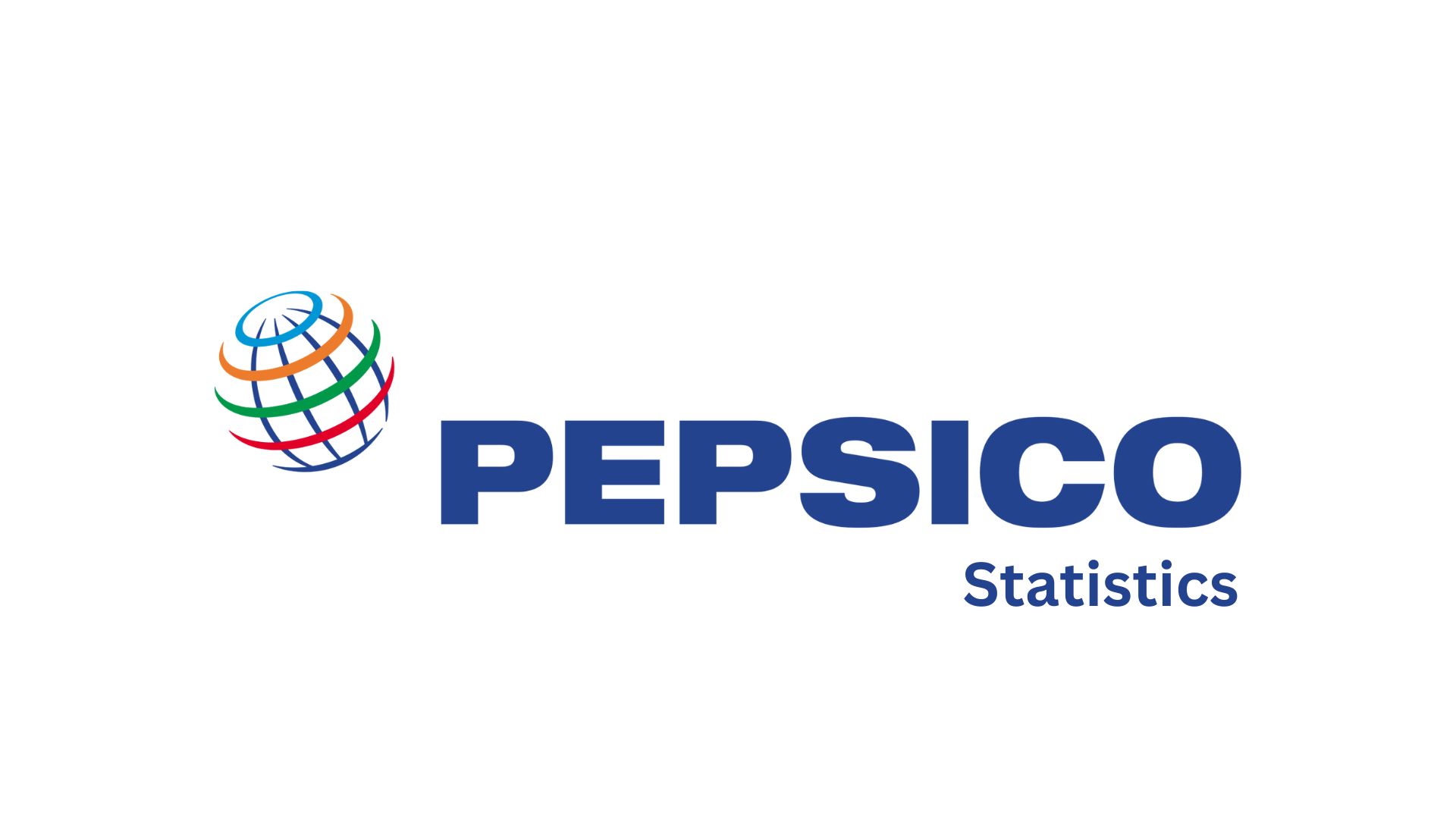Vizio Statistics By Revenue, Market Share And Trends (2025)

Updated · Aug 05, 2025

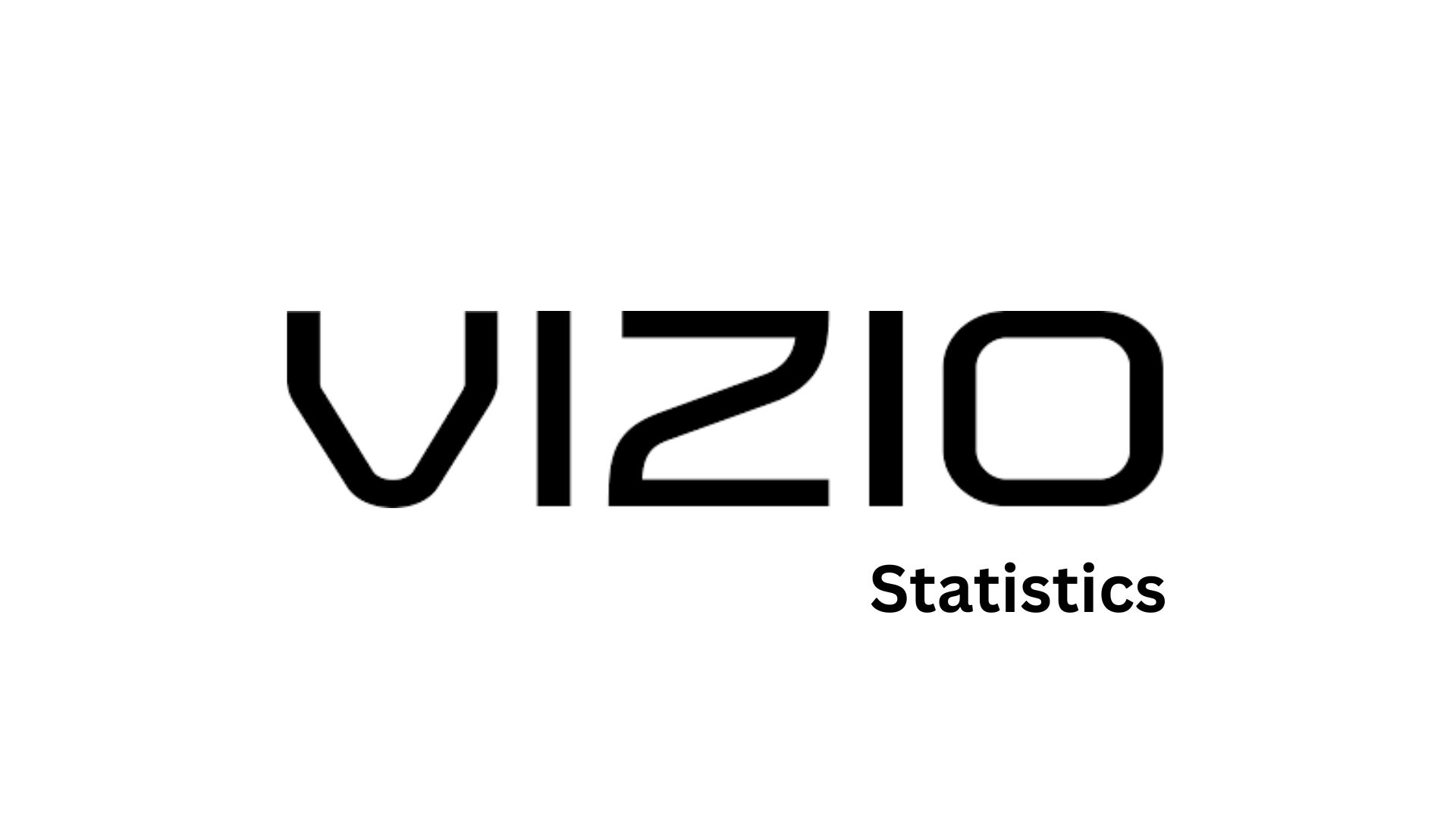
WHAT WE HAVE ON THIS PAGE
- Introduction
- Editor’s Choice
- Origins and Founding of Vizio Statistics
- Revenue and Growth Breakdown in Vizio Statistics
- Gross Profit and Margins in Vizio Statistics
- SmartCast User Engagement Metrics
- Advertising and Platform Growth Trends
- Shipment and Device Performance Metrics
- Market Share and Competitive Position
- User Experience and Public Sentiment
- Strategic Shifts and Business Model Evolution
- Future Outlook and Forecasts in Vizio Statistics
- Conclusion
Introduction
Vizio Statistics: If you’ve ever wondered how Vizio transformed from a scrappy startup to going into millions of American living rooms. In this article, I’m breaking down Vizio Statistics and explaining how a budget TV maker became an ad‑tech contender.
From origin to revenue breakdown, platform engagement to Walmart’s acquisition, these stats don’t just give data; they tell Vizio’s full evolution, platform power, and where it could be headed next. Let’s get into it.
Editor’s Choice
- Founded in 2002 on just US$600K, by 2007, Vizio had already grabbed 1 in LCD TV volume in North America.
- In 2023, device revenue dropped 22% while Platform+ (ads & streaming) grew 25%, making up 36% of total revenue.
- SmartCast had 1M active users by Q3 2024 and streamed nearly 5.8B hours that quarter alone.
- Platform+ margins hover around 60 to 70%, while device margins are razor-thin or negative.
- SmartCast ARPU rose to US$37 by Q3 2024, a solid uptick in monetization.
- Walmart’s US$2.3B acquisition in December 2024 signals a full pivot toward retail-based ad monetization.
- Usage (hours streamed) and active accounts are now currency; hardware is secondary.
- Vizio still holds a 13 to 15% share of the U.S. smart TV market and 14% in soundbars.
- Affordability wins customers, but newer hardware reliability concerns may impact long-term engagement.
- Platform+ revenue likely to hit US$750M+ by 2025, with user numbers heading toward 20M and ARPU pushing past US$40.
| Topic | Key Metric / Value |
| Founded |
2002 with US$600K seed capital |
|
North America 1 by 2007 |
Flat‑panel HDTV volume |
| 2023 Device Revenue |
US$1.08 B (‑22%) |
|
2023 Platform+ Revenue |
US$598 M (+25%) |
| Platform+ Share of Total |
36% |
|
Q3 2024 SmartCast Users |
19.1 M active accounts, 5.8 B streaming hrs |
| Q3 2024 ARPU |
US$37 per user annually |
|
Platform+ Gross Margin |
60 to 70% |
| Walmart Acquisition |
US$2.3 B (completed Dec 2024) |
|
U.S. Smart TV Market Share |
13 to 15%; Soundbars 14% |
Origins and Founding of Vizio Statistics
- Vizio was launched in 2002 in California with a modest US$600,000 seed fund, aiming to shake up premium TV pricing.
- By 2007, it had become the No. 1 selling flat-panel HDTV brand in North America, thanks to its value-focused strategy.
- In 2009, Vizio fully exited plasma TV production, pivoting solely to affordable LED/LCDs.
- By 2015, it acquired Inscape (content-recognition tech) and used that data to expand into targeted advertising.
- Around IPO time in 2021, Vizio had already sold over 80 million TVs and rolled out its SmartCast platform widely.
- Its IPO in March 2021 brought a valuation near US$4 billion, solidifying its position as a growth electronics firm.
- Manufacturing is outsourced across Taiwan, China, Mexico, and Vietnam, enabling lean operations and flexible costing.
- Vizio saw a decline in reported hardware build quality post-2018, with earlier models still praised for reliability.
- In late 2024, Walmart acquired Vizio for around US$2.3 billion, shifting it from product-first to ad-first strategic alignment.
- Founder William Wang remains CEO, keeping continuity even as the platform plays a bigger role in the company’s strategy.
| Year/Event | Key Highlight |
| 2002 | Launched on US$600K seed capital |
| 2007 | Became the 1 HDTV brand in North America |
| 2009 | Pivoted exclusively to LED/LCD TVs |
| 2015 | Acquired Inscape for data and ad monetization |
| 2021 | IPO valued the company at $4B |
| Manufacturing | Outsourced to Asia & Mexico via ODMs |
| Post‑2018 | Hardware quality concerns vs. earlier models |
| Late‑2024 | Bought by Walmart for approx. $2.3B |
| Leadership | Founder/CEO William Wang remains in charge |
Revenue and Growth Breakdown in Vizio Statistics
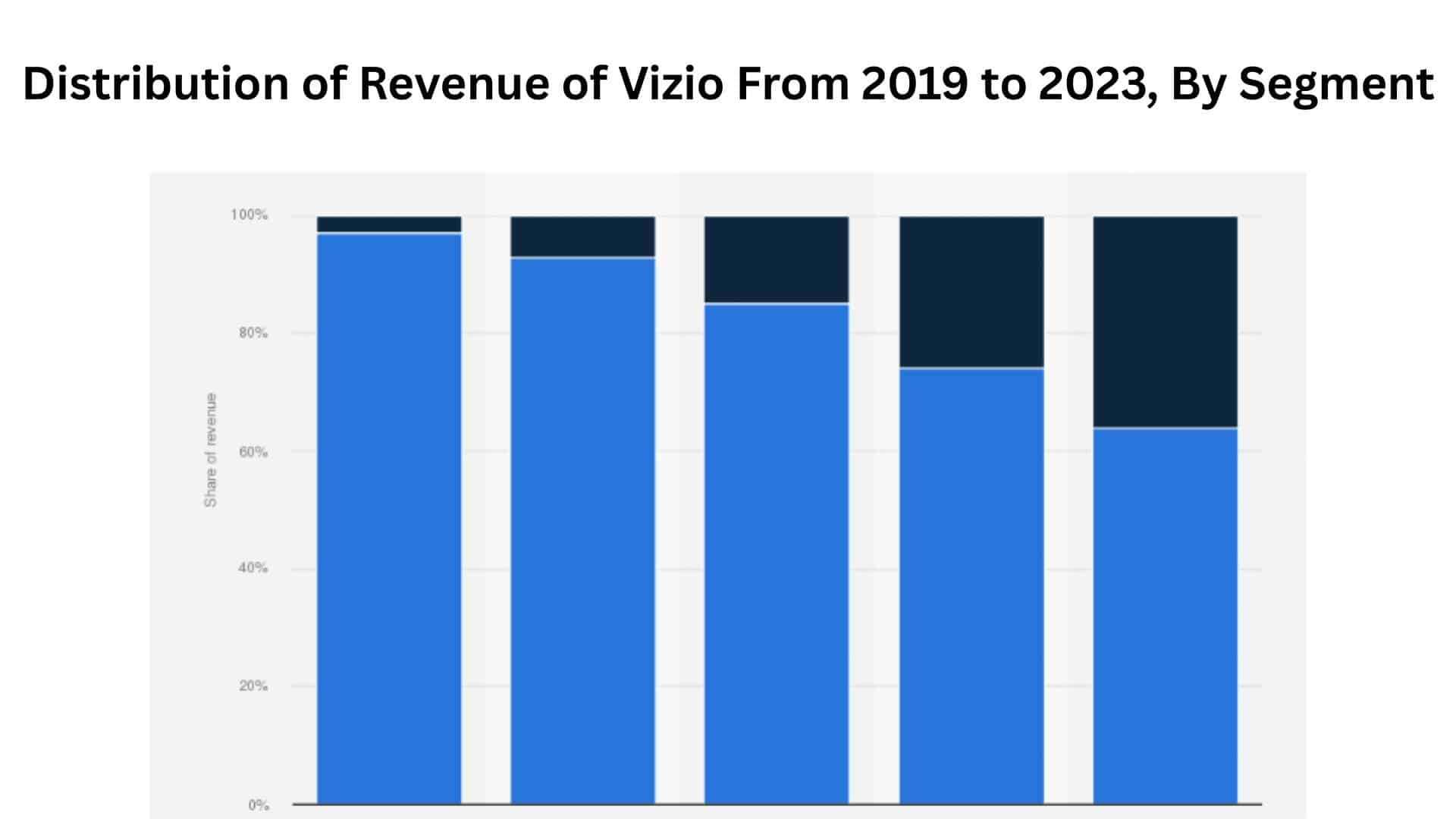
- In 2023, total net revenue stood at about US$1.68 billion, indicating a modest decline from the previous year’s $1.86 billion.
- Device revenue covering TVs and soundbars dipped approximately 22%, slipping to roughly US$1.08B.
- In contrast, Vizio’s Platform+ revenue (streaming & ads) grew around 25%, totaling nearly US$598 million in 2023.
- Platform+ revenue now represents roughly 36% of total income, up from under 30% in prior years.
- Device-driven sales showed a decline pressure from unit volume drop and unit price compression.
- Quarter‑by‑quarter in 2024: Q1 net revenue flat; device down 16%, Platform+ up 27%.
- In Q2 2024, net revenue rose 11% year-over-year: device up 6%, Platform+ up 19%.
- By Q3 2024, overall revenue was up 4%: device down 8% while Platform+ soared 26%.
- Device revenue decline reflects a shipment volume drop of 15% and 9% ASP.
- Platform+ growth is driven by rising ad deals and higher per-user monetization.
| Period | Device Rev | Platform+ Rev | Total Rev | Device Δ | Platform+ Δ |
| 20222023 | $1.08B (‑22%) | $598M (+25%) | $1.68B (‑10%) | ‑22% | +25% |
| Q1 2024 vs Q1 2023 | device ‑16% | +27% | flat (‑1%) | ‑16% | +27% |
| Q2 2024 vs Q2 2023 | +6% | +19% | +11% | +6% | +19% |
| Q3 2024 vs Q3 2023 | ‑8% | +26% | +4% | ‑8% | +26% |
Gross Profit and Margins in Vizio Statistics
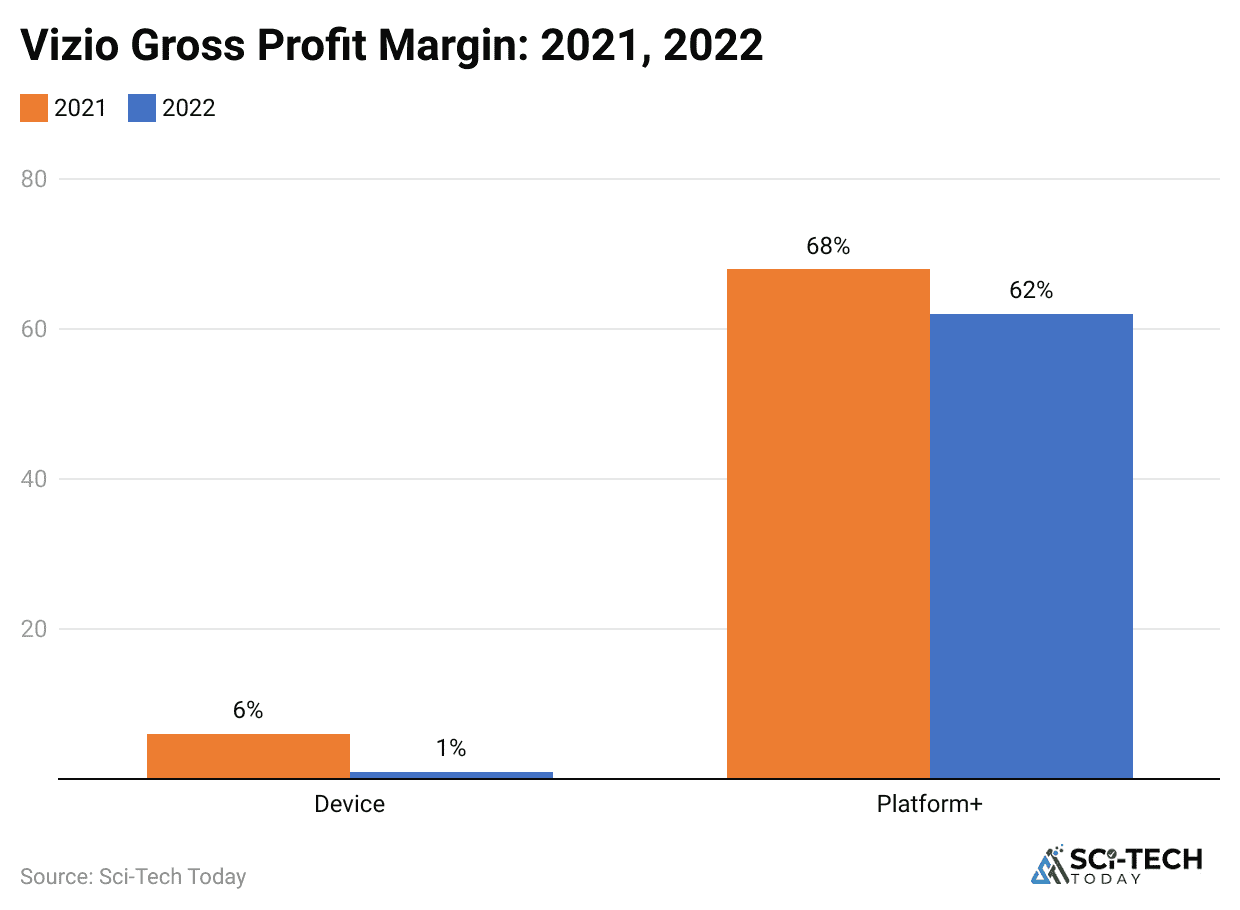
- In 2023, total gross profit rose to approximately US$356 million, a 14% increase over the prior year.
- Device gross profit turned slightly negative (to US$8.6M), reflecting razor‑thin or loss‑leading hardware margins.
- Platform+ gross profit, by contrast, came in near US$365 million, plumbing 65 to 70% margins.
- The shift means Platform+ delivers most profits now, even as device sales shrink.
- In Q2 2024, total gross profit rose 16%, with Platform+ contributing nearly all of it.
- The device segment posted minimal gross gain (US$0.9M) in Q2, showing severe margin constraints.
- Q3 2024 gross profit climbed 13%, Platform+ grossed nearly US$116M while the device lost again.
- Device margins hover near zero or negative, while Platform+ margins consistently exceed 60%.
- This margin model enables Vizio to reinvest in content/data while manufacturing costs erode device profits.
- The gross margin dynamics validate the strategic push toward monetizing streaming hours, not hardware.
| Period | Device GP | Platform+ GP | Total GP | Device Margin | Platform+ Margin |
| 2023 | to $8.6M | $364.9M | $356.3M | 0% | 65 to 70% |
| Q2 2024 | +$0.9M | $98.6M | $99.5M | negligible | 60%+ |
| Q3 2024 | to $6.7M | $115.8M | $109.1M | negative | 65% |
SmartCast User Engagement Metrics
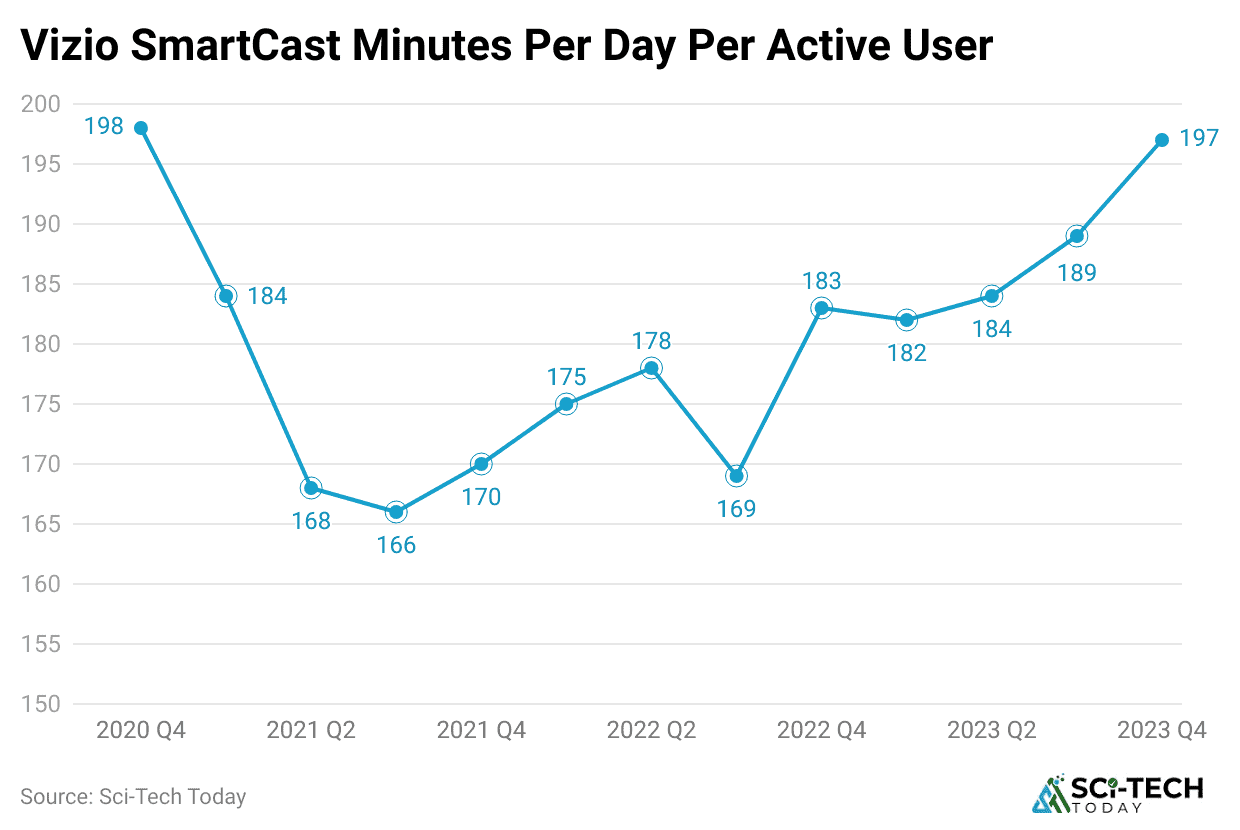
- Active SmartCast accounts reached about 19.1 million by Q3 2024, up 7% year‑over‑year.
- Total streaming hours via SmartCast in 2023 topped 20.5 billion hours, an 18% jump over 2022.
- In Q3 2024 alone, users streamed 5.8 billion hours, nearly matching full-year numbers of early years.
- Average usage per account per month hit 101 hours in Q3, indicating high engagement and stickiness.
- During 2023, average annual revenue per user (ARPU) was about $32.48; in Q3 2024, it rose to $37.17.
- That 18% growth in ARPU shows effective monetization strategies are scaling.
- Roughly 96% of Vizio TVs sold come with SmartCast built in, giving a massive reach into living rooms.
- Daily SmartCast use averages 1.4 hours per user, well above ad delivery thresholds for advertisers.
- SmartCast now rivals standalone streaming platforms in time spent per user inside its OS.
- These high engagement and ARPU metrics are critical to the Platform+ revenue uptrend.
| Period | Active Accounts | Streaming Hours (b) | Avg hrs/account/mo | ARPU ($) |
| 2023 Annual | 18.5M | 20.5B | 92 hrs | 32.48 |
| Q1 2024 | 18.6M | 5.6B | 101 hrs | 34.24 |
| Q2 2024 | 18.8M | 5.6B | 100 hrs | 35.39 |
| Q3 2024 | 19.1M | 5.8B | 101 hrs | 37.17 |
Advertising and Platform Growth Trends
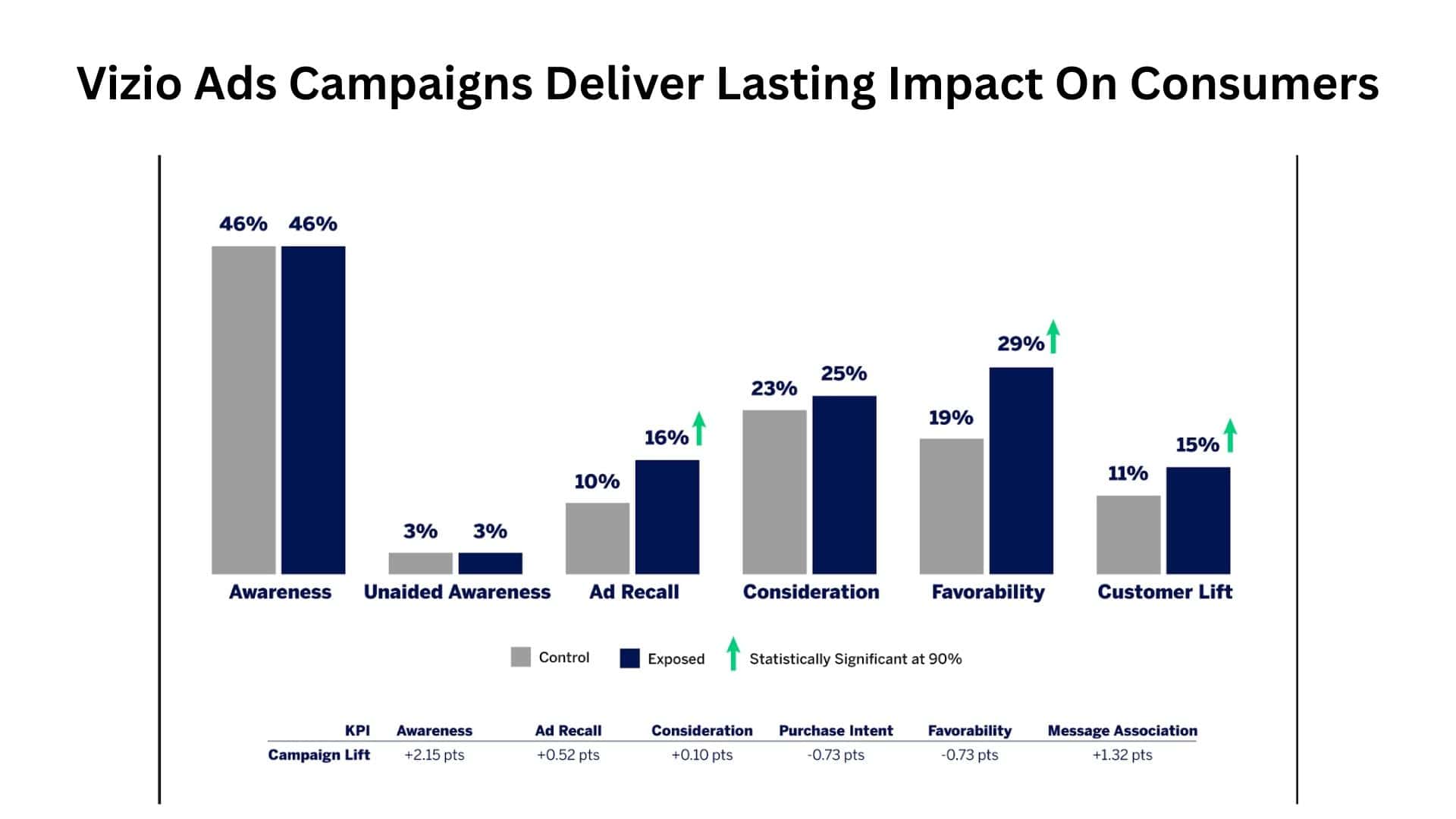
- Ad revenue grew roughly 31% YoY in 2023, marking stronger direct relationships with brands.
- The number of direct advertising deals surged 40% in Q1 2024, then 13% in Q2, and 20% in Q3.
- Vizio now tracks more than 20 million devices via its Inscape ACR tech for targeting.
- Average CPM (cost per thousand ad impressions) on SmartCast is $18, up year‑over‑year.
- Platform+ revenue growth outpaces hardware decline. 2023 ad revenue alone neared $466 million.
- Non‑ad Platform+ revenue (licensing, CRO, etc.) grew 9% YoY in 2023, adding layers to growth.
- With Walmart integration, advertisers’ reach can leverage retail purchase data, plus household viewing.
- Platform+ margins above 60% let Vizio reinvest in ad tech and reduce dependence on thin hardware.
- SmartCast’s ad targeting is richer than Roku’s, thanks to combined viewer + retail data post‑2024.
- Ad-driven revenue is projected to drive 30%+ growth per quarter into 2025, as device sales flatten.
| Metric | Recent Value / Trend |
| Ad Revenue Growth 2023 | 31% YoY ($466M total) |
| Direct Deals YoY (Q1 to Q3) | +40% in Q1, +13% in Q2, +20% in Q3 |
| Devices Tracked by Inscape | 20 million |
| Avg CPM | $18 |
| Platform+ Margins | 60 to 70% |
| Device vs. Platform Shift | Platform+ revenue now 36% of total revenue |
Shipment and Device Performance Metrics
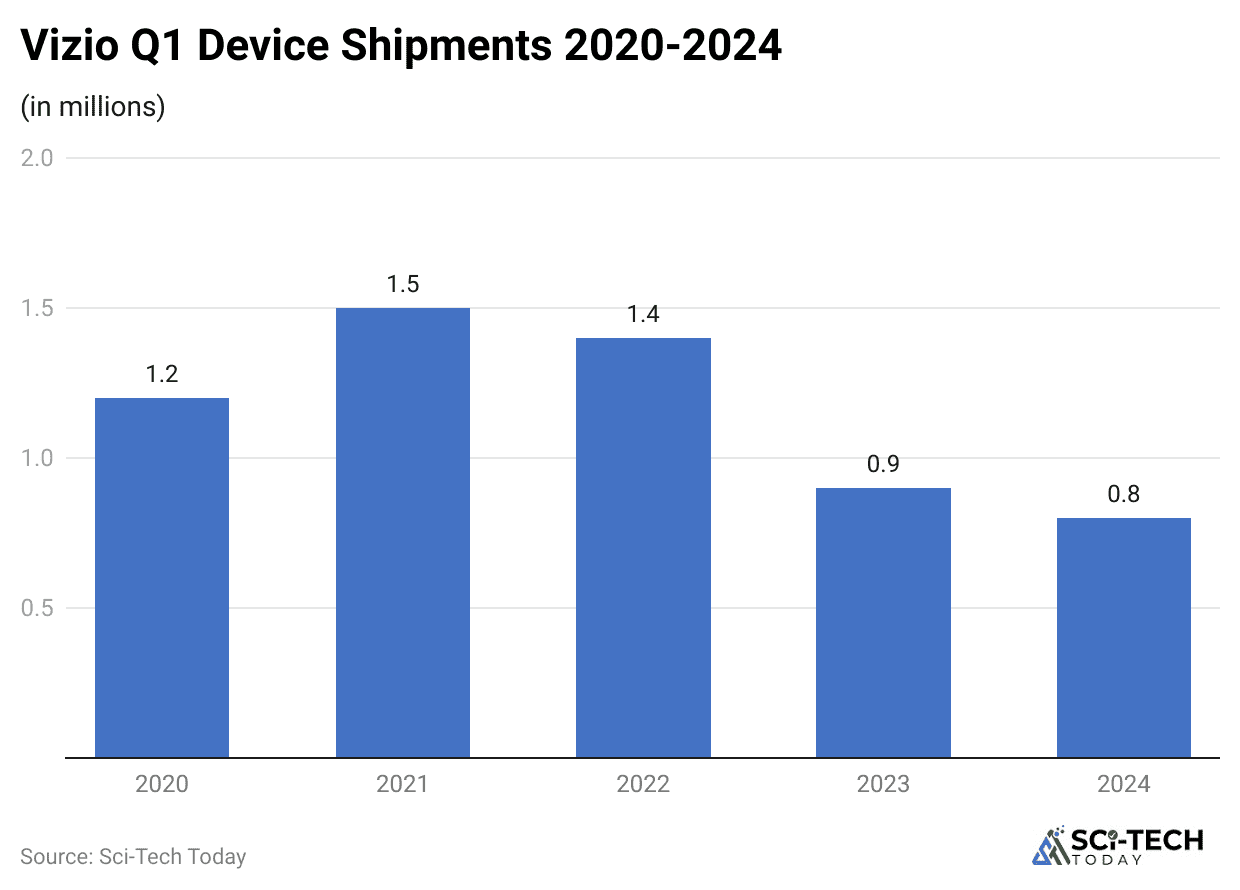
- In 2023, Vizio shipped around 4.3 million smart TVs, down 16% from 5.2M units in 2022.
- In 2024, Q1 unit shipments dropped 14%, and Q3 about 5%, impacting device revenue directly.
- Average selling price (ASP) for Vizio TVs fell around 9% in 2023, squeezing device margins.
- Soundbar shipments declined along with TVs, further dragging device segment results.
- Device revenue decline stems from both volume reduction and increased discounting pressure.
- Trade‑in programs and seasonal discounting pushed down ASP in late 2023 and early 2024.
- Emerging competition from brands like TCL, Hisense, and Amazon’s Fire TVs accelerated device decline.
- Global shipment figures show limited expansion, and Vizio remains largely North American‑centric.
- Despite the decline, Vizio remains among the top 5 sellers of smart TVs in the U.S., retaining a 13% share.
- Forecasts suggest stabilized shipments only if hardware quality improves or new flagship lines arrive.
| Period | TV Units Shipped | YoY Δ | ASP Δ | Device Rev Trend |
| 2022 2023 | 5.2M 4.3M (‑16%) | ‑16% | ‑9% | Declining |
| Q1 2024 vs Q1 2023 | 0.8M (‑14%) | ‑14% | lower | Device down 16% |
| Q3 2024 vs Q3 2023 | 1.0M (‑5%) | ‑5% | lower | Device down 8% |
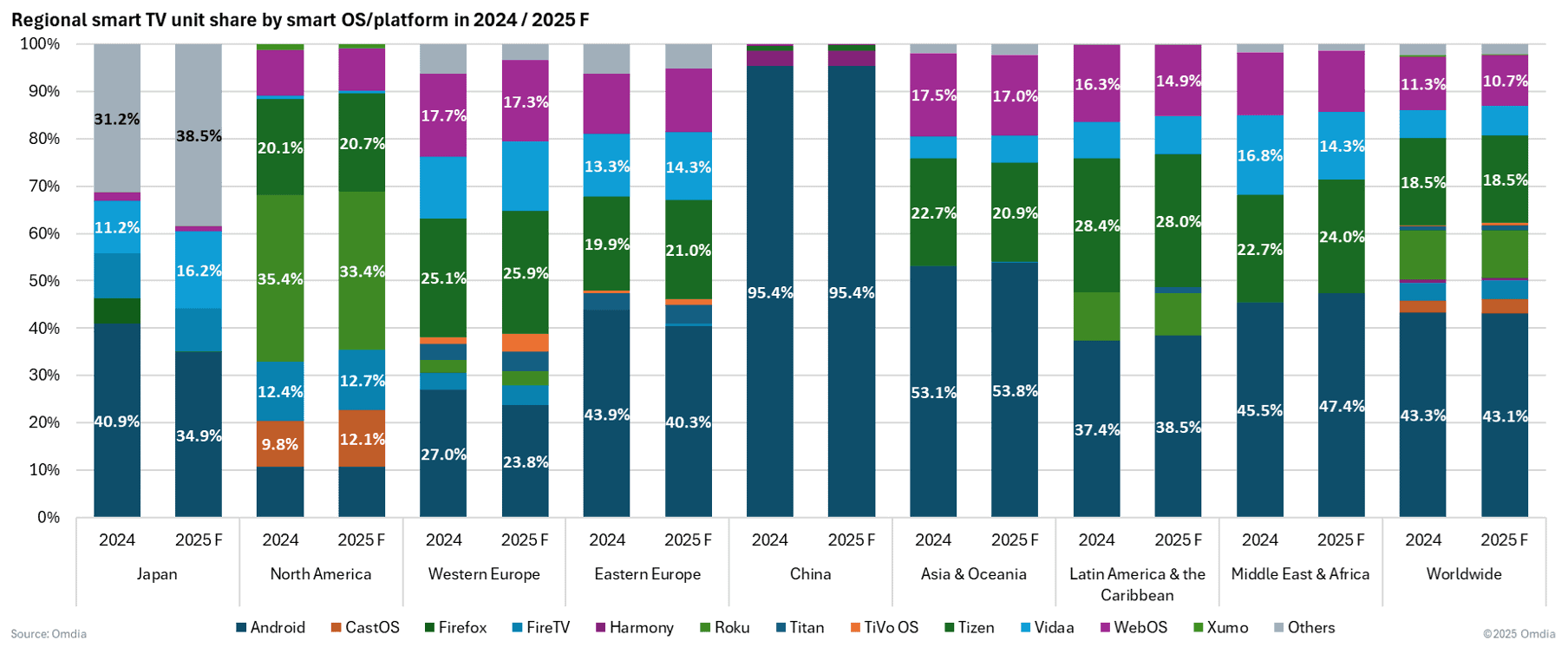
- In 2023, Vizio accounted for about 13 to 15% of the U.S. smart TV market, making it a perennial top‑5 brand.
- Vizio also holds roughly 14% of the U.S. soundbar market, positioning it as a reliable volume leader.
- While Samsung and LG dominate the premium TVs, Vizio undercuts them on price with a healthy market reach.
- Roku and TCL brands gained ground in smart TVs, putting pressure on Vizio’s hardware share.
- In ad-tech, Vizio’s Platform+ revenue-per-user metrics compare well to Roku’s $41 ARPU (Vizio 37).
- Walmart’s backing gives Vizio the potential to integrate retail shopper data with TV viewing data for targeting.
- Emerging Chinese OEMs are eroding market share in entry-level segments with aggressive pricing.
- Platforms like Roku and Amazon Fire still lead OS engagement, but SmartCast has a strong growth cadence.
- Vizio holds elevated relevance in the U.S. but remains small globally, unlike Samsung or LG, with wider distribution.
- Moving forward, its comp advantage comes from combining hardware reach with Walmart/advertiser synergy.
| Segment | Vizio Share (U.S.) | Competition and Strategic Position |
| Smart TV Market | 13 to 15% | 2 to 5 vs Samsung, LG, TCL/Roku |
| Soundbar Segment | 14% | Among the top U.S. brands |
| ARPU (Q3 2024) | $37/user | Slightly below Roku ($41) |
| Platform Strength | Growing rapidly | Strong ad-tech vs Roku |
| Global Reach | North America only | Lags Samsung/LG globally |
User Experience and Public Sentiment
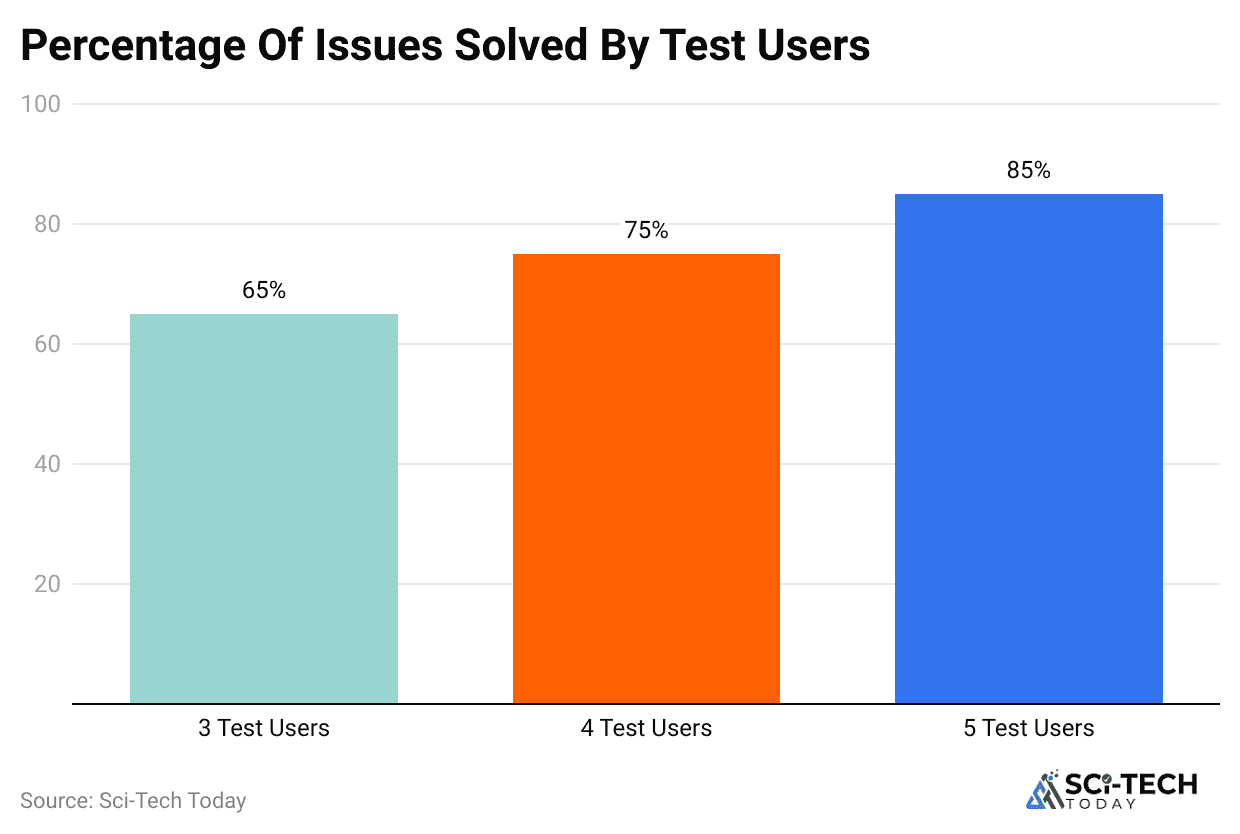
- Many user reports describe SmartCast as slow or unreliable, prompting some to bypass it for external devices.
- Common complaints include issues with Wi-Fi connectivity, interface glitches, and missing profile features.
- Some users praise Vizio’s early models (2012 to 2016) for build quality, contrasting them with recent hardware.
- There’s consistent chatter that newer Vizio TVs have more screen defects or component failures.
- Forums show users regularly plugging in Roku sticks or Fire TVs rather than opening SmartCast directly.
- Yet many reviews still highlight Vizio’s unbeatable price-to-spec value, especially in entry-level 4K TVs.
- Poor app experience on SmartCast can affect user retention and reduce ad impressions per device.
- Soundbars generally earn better user ratings than TVs, with high marks for performance at a low cost.
- User sentiment often reflects a trust trade-off: affordability at the cost of a polished software experience.
- Unless UX improves, hardware risk could damage SmartCast growth and future Platform+ engagement.
| Feedback Area | Common Themes |
| SmartCast Reliability | Slow, glitchy connectivity issues |
| Hardware Quality Trend | Earlier models praised, newer ones mixed |
| UX & Interface Issues | Missing profiles, clunky menus |
| App Utilization Behavior | Users often use external streaming sticks |
| Value Proposition | Widely appreciated for the price-to-features |
Strategic Shifts and Business Model Evolution
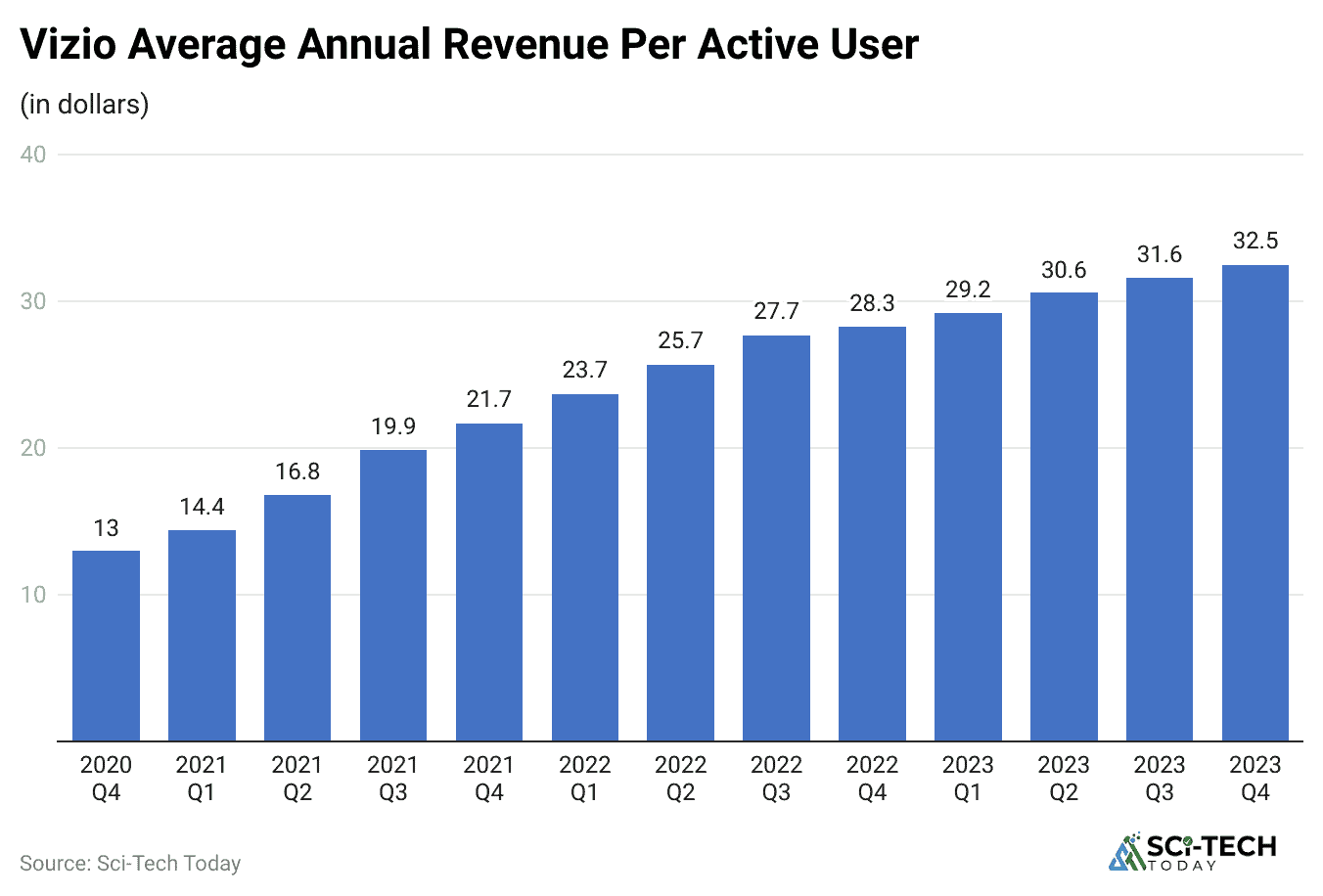
- Since around 2018, Vizio has pivoted from hardware-first to platform-first as revenues and margins have shifted.
- Platform+ margins consistently hover around 60 to 70%, while hardware margins remain tight or negative.
- Advertising & data services now account for 36% of total company revenue, up from under 30%.
- Founder William Wang stayed in charge through the Walmart acquisition, ensuring platform continuity.
- Inscape underpinned the shift, capturing video viewing data for personalized ad targeting.
- The Walmart deal locks Vizio into a broader retail-advertising ecosystem via Walmart Connect.
- Vizio will operate semi-independently with Walmart’s backing, keeping tech and product identity intact.
- Future growth is expected to come primarily through ad monetization rather than new product lines.
- Potential for branded hardware upgrades (mini-LED or OLED) exists, but dependent on margin appetite.
- The evolving model focuses on viewer hours, ad yield per user, and broader household analytics, not just TV sales.
| Period | Strategic Focus Shift | Resulting Business Model |
| Pre‑2018 | Hardware-first manufacturing model | TV and soundbar product focus |
| 2018 to 2021 | Launch of Platform+ (SmartCast, Inscape) | Ads & data grew in importance |
| 2021 IPO – 2023 | Public scaling of platform revenue | Device decline, platform rise |
| Post‑2024 Acq. | Joined Walmart’s ad-tech/retail ecosystem | Ad-first integrated business model |
Future Outlook and Forecasts in Vizio Statistics
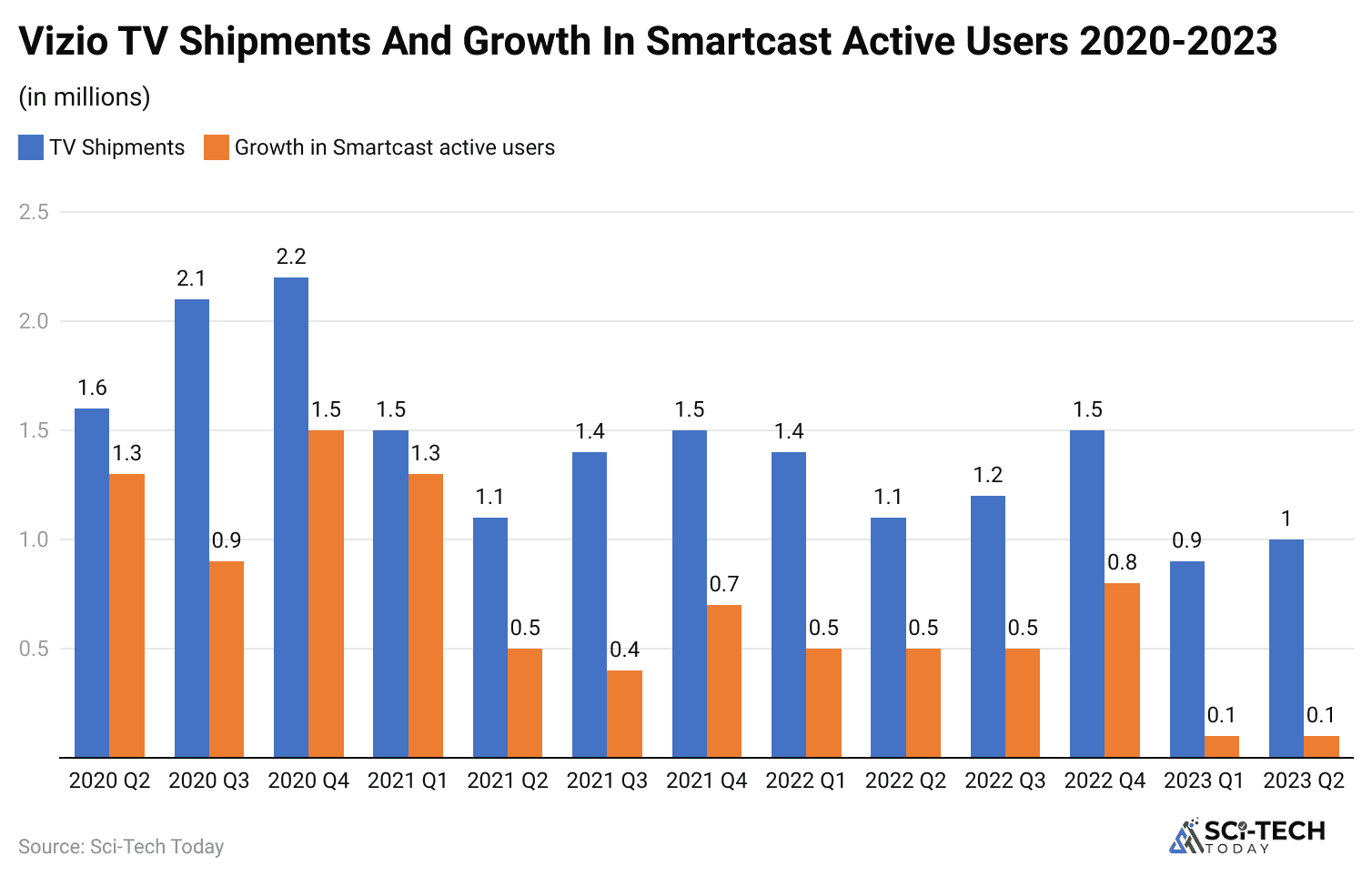
- Demand for ad‑driven TV ecosystems continues to grow platform ad revenues are expected to grow 20 to 30% quarterly.
- SmartCast user base likely to exceed 20 million by the end of 2024, based on current growth trajectory.
- ARPU trending upward by Q4 2024, could surpass US$38 to US$40 per user annually.
- Device sales are likely to remain flat or decline unless hardware reliability or innovation improves.
- Walmart integration offers powerful data synergy linking shopper behavior to viewing segments.
- Competition from TCL, Hisense, Roku, and Amazon may further squeeze hardware ASP and margins.
- Vizio could launch higher‑end models (mini‑LED, OLED) to regain market share and lift ASP.
- International expansion remains limited growth potential tied to the U.S. ad and retail ecosystem.
- Ad/Platform+ revenue may break US$750M by 2025 if growth projections hold.
- Ultimately, Vizio Statistics evolve into measures of engagement, ads served, and audience scale, not just TVs sold.
| Forecast Factor | Expected Trend by 2025 |
| SmartCast Users | 20M+ users |
| ARPU | US$38 to US$40 per year/user |
| Platform+ Revenue | US$750M+ if growth sustains |
| Hardware Segment | Flat/decline unless new quality models |
| Retail/Data Integration | Deep integration with Walmart Connect |
Conclusion
Wading through Vizio Statistics reveals a company that has evolved from selling budget TVs to building a scalable ad-tech platform wrapped in SmartCast. The story isn’t just about units shipped, it’s about viewer hours, active accounts, and monetization per user.
As hardware revenue fades, Platform+ is surging. Walmart’s acquisition cements Vizio’s transformation into a retail media asset. If you’re looking at Vizio today, don’t just count TVs; they’re selling attention, and that’s gold in the connected-TV age. I hope you guys like these statistics. If you have any comments, kindly let me know in the comments section.
Sources
FAQ.
Today, Vizio is half hardware brand, half ad-tech platform, smart TVs powered by SmartCast deliver video hours, which turn into ad revenue.
Around 19.1 million active accounts as of Q3 2024, all watching thousands of hours weekly.
Platform+ is Vizio’s streaming and ad business; it generated $598 million in 2023, making up 36% of total revenue.
About $37 per year as of Q3 2024, up from $32.48 in 2023.
Yes, they still account for 64% of revenue, but hardware gross margins are now minimal or negative.
In 2023, shipments totaled about 4.3 million units, down 16% from 2022.
For its ability to marry retailer shopper data with TV ad engagement, accelerating Walmart’s retail ad ambitions.
Nearly all gross profit (60 to 70%) now comes from Platform+; devices contribute very little profit.
In Q3 2024, average SmartCast users streamed roughly 101 hours/month, or 1.4 hours/day.
Platform+ is expected to exceed $750M in revenue by 2025, with user numbers over 20M and ARPU exceeding $40.

Joseph D'Souza founded Sci-Tech Today as a personal passion project to share statistics, expert analysis, product reviews, and experiences with tech gadgets. Over time, it evolved into a full-scale tech blog specializing in core science and technology. Founded in 2004 by Joseph D’Souza, Sci-Tech Today has become a leading voice in the realms of science and technology. This platform is dedicated to delivering in-depth, well-researched statistics, facts, charts, and graphs that industry experts rigorously verify. The aim is to illuminate the complexities of technological innovations and scientific discoveries through clear and comprehensive information.


